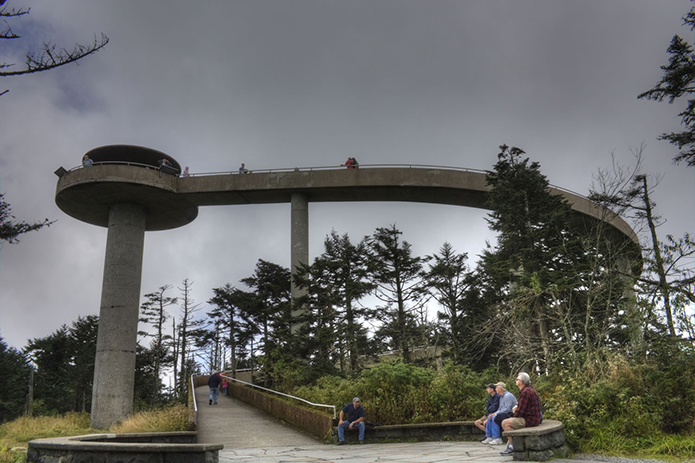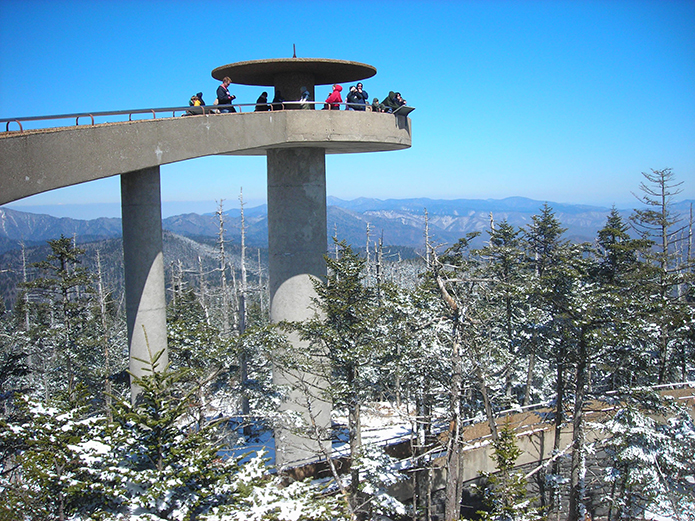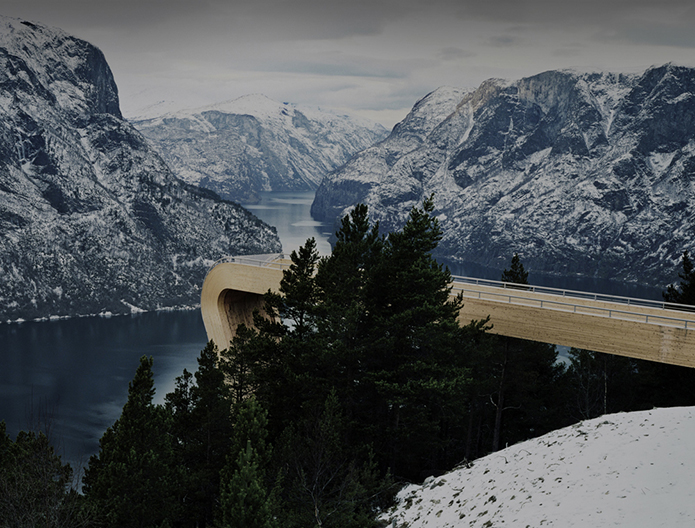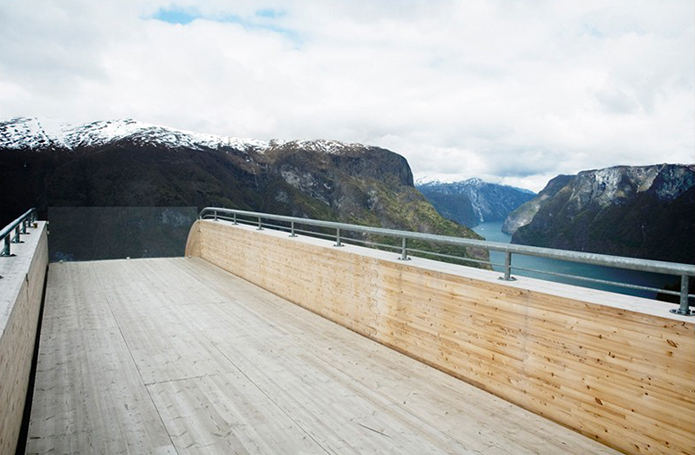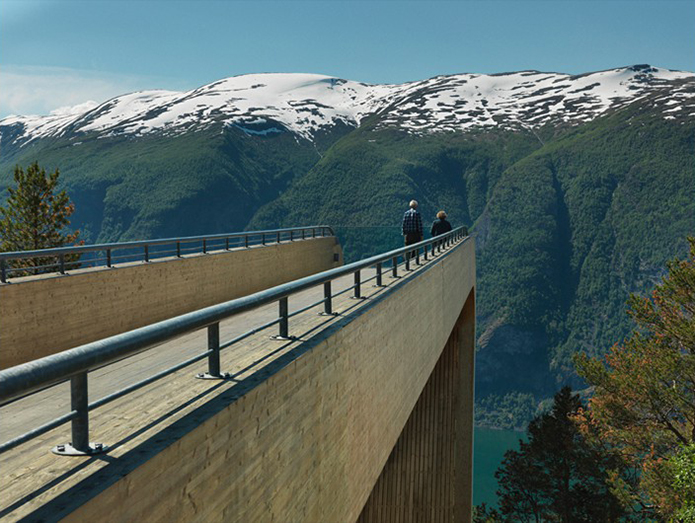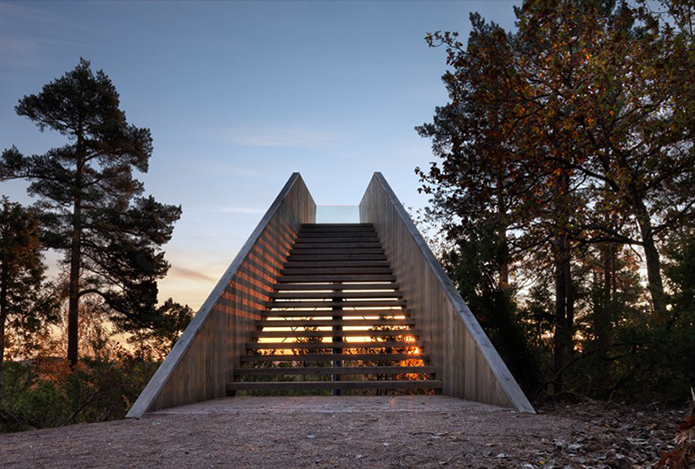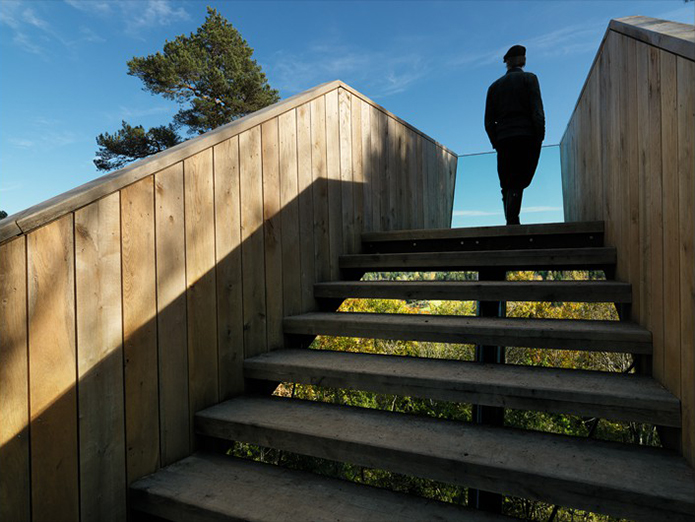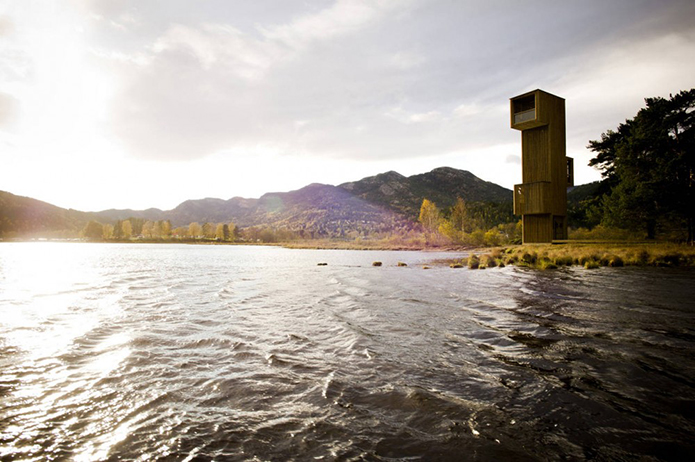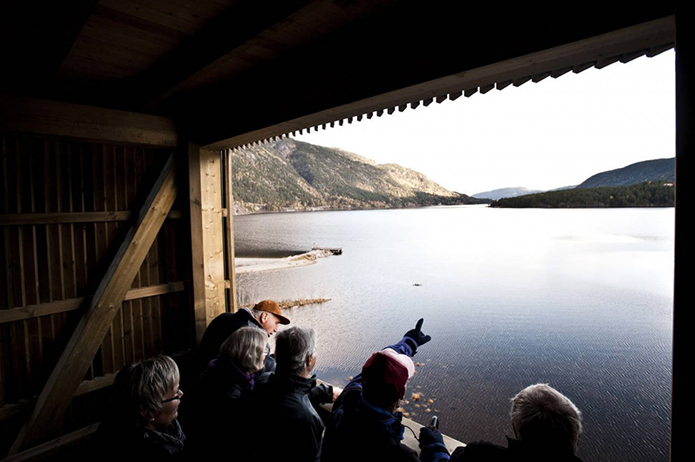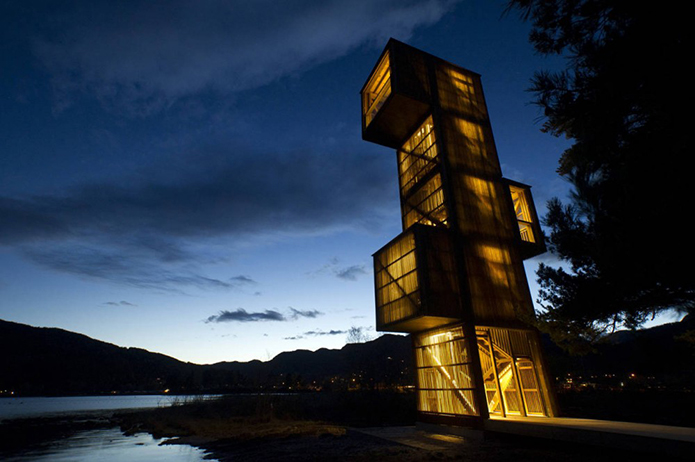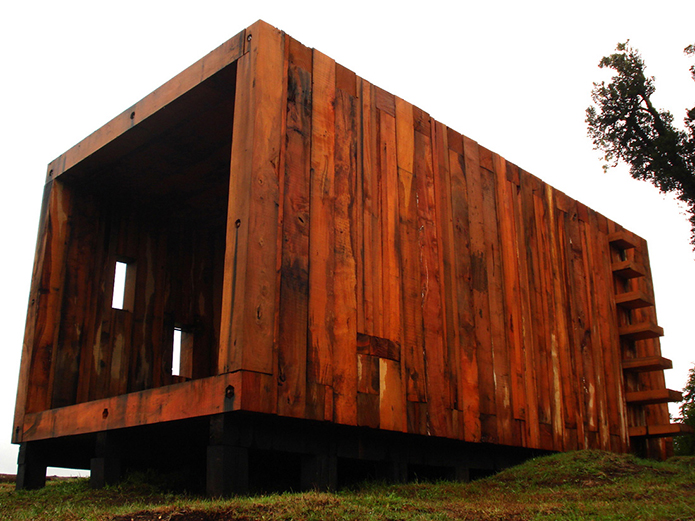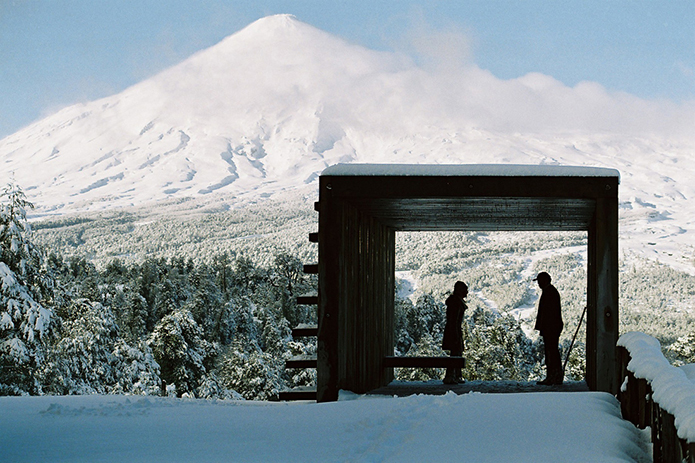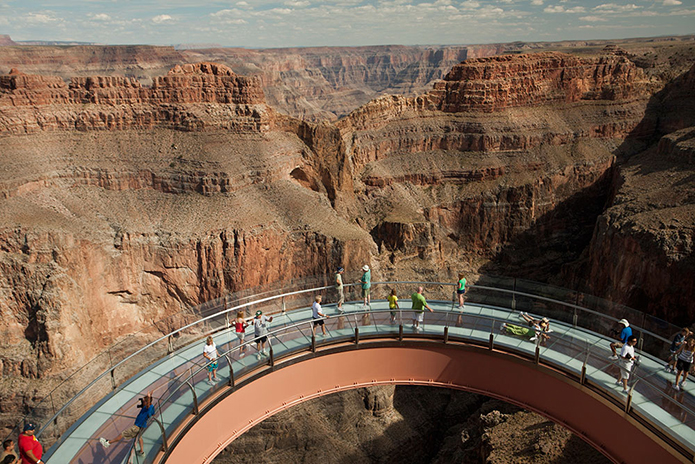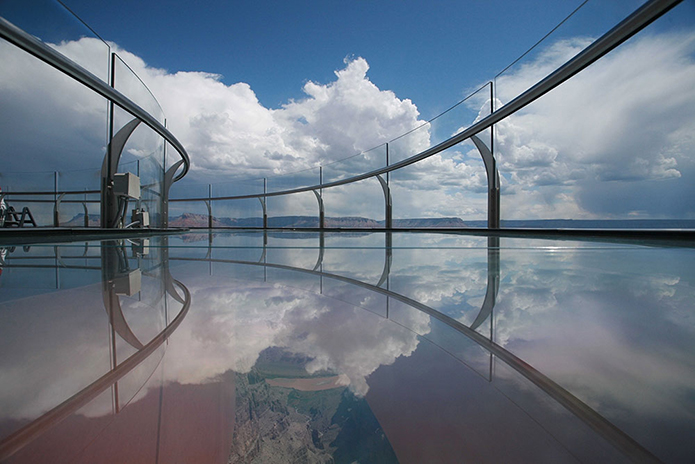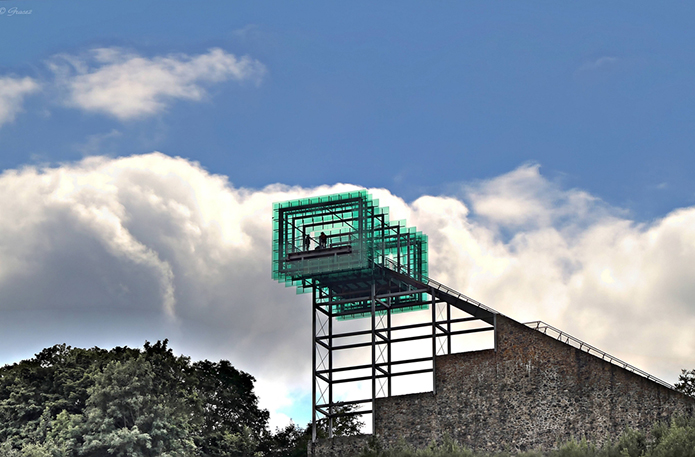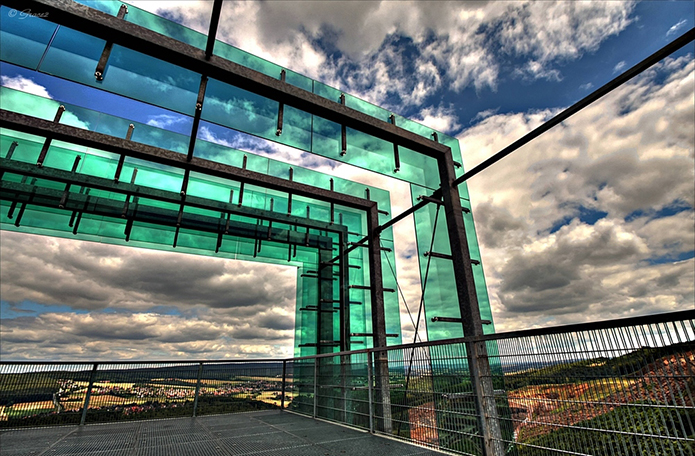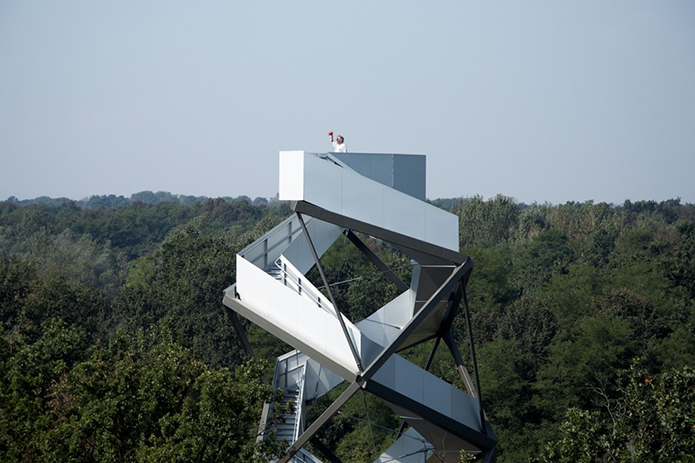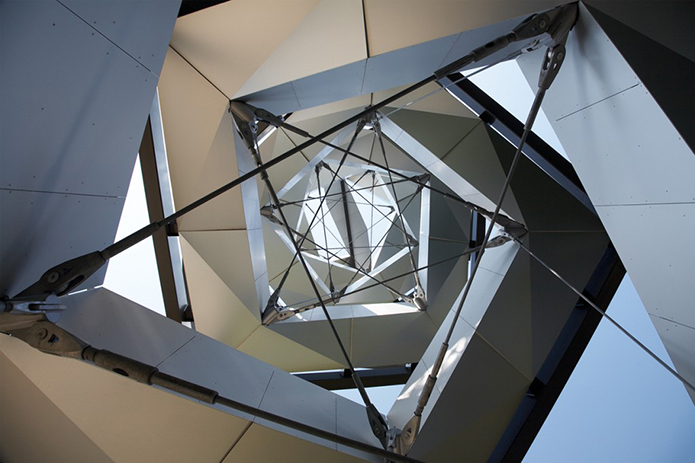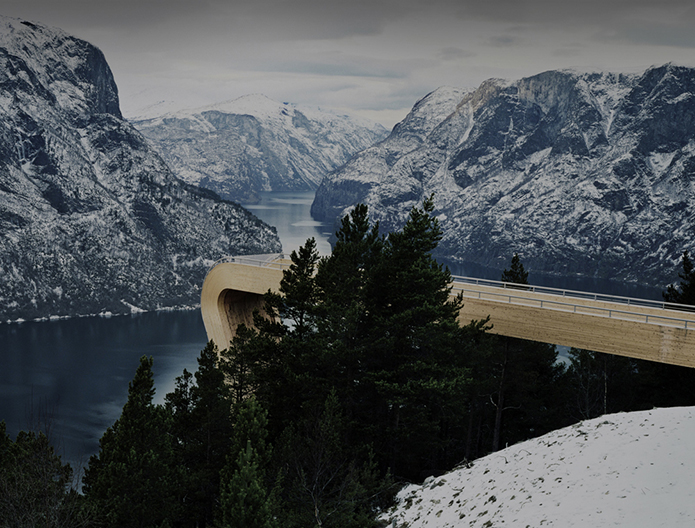
Aurland Lookout profile. Image © Saunders Architecture.
Lookouts and observation decks have been used throughout the centuries for varying purposes. Examples include: as fire lookouts operated by forestry services; watchtowers, especially availed of for military motives; and viewing lookouts, used to provide sweeping vistas over natural beauty spots and urban conurbations.
This article’s subject matter is concerned with purpose-built lookouts; those structures intended to provide accessible views to all. As such, it does not explore high-rise buildings or skyscrapers that may encompass an observation deck as part of their configuration.
For time immemorial, human beings have been curious souls. Our need to understand, comprehend or merely marvel has been a constant human quest. As people, we have an innate tendency to watch, observe, look, gaze and contemplate. Nature in its many guises has held an abiding allure; it is one that we endeavour to comprehend with unabated fervour or simply ponder and appreciate. For instance, how many times have you found yourself on a car journey, only to pull over at some vantage point, in awe of the horizon’s scenic spectacle? Nature time and again astounds us.
Humans have an often precarious relationship with nature, on the one hand seeking to conquer it, on the other admiring and respecting what it has to offer. Yet it is frequently the case that to admire nature, we must somehow conquer it. Our ability to use design as a way to overcome nature has been a constant advantage. The design and construction of lookouts enables us to participate with nature in a manner not previously available.
Of course, it isn’t always the case that design is prerequisite to enjoying and admiring nature. Nature itself will provide natural lookouts and has done so for many years:
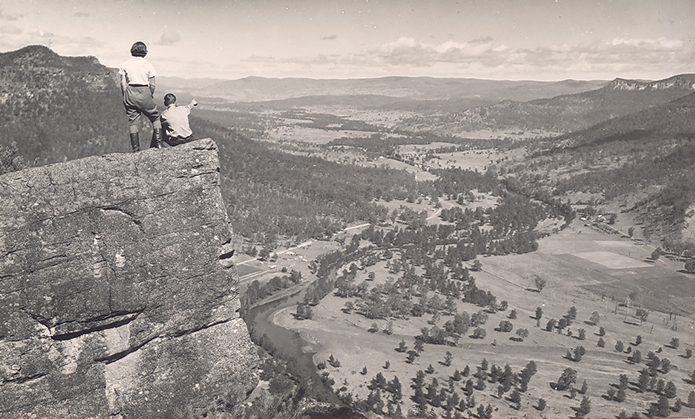
View of Burragorang Valley from Jumpup Lookout in New South Wales, Australia. Image via NSW State Records.
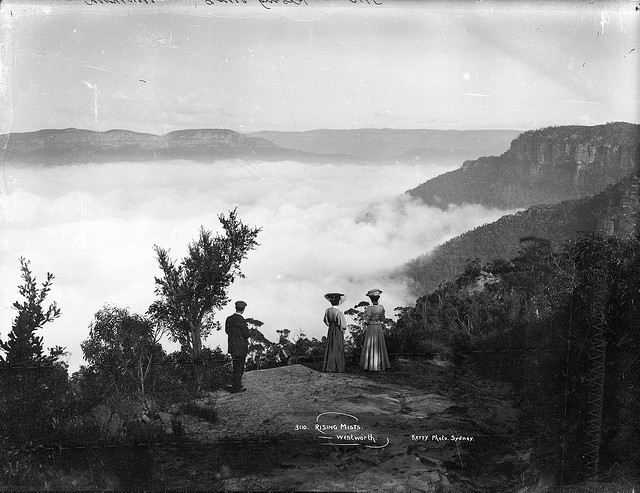
Rising mists, near Wentworth Falls lookout, Blue Mountains, Australia, c1900. Image via Powerhouse Museum Collection.
Moreover, lookouts can be as straightforward as a fence or railing:
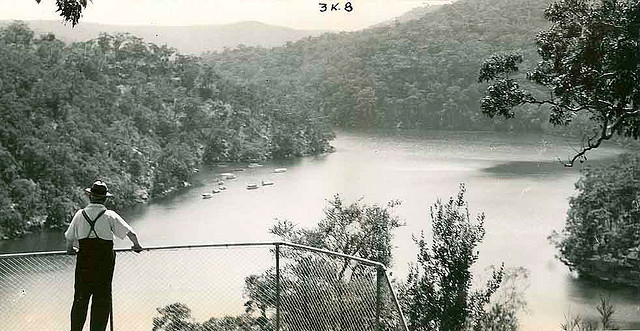
View of Cowan Waters from Appletree Lookout, Kuring-Gai Chase National Park. Image via NSW State Records.
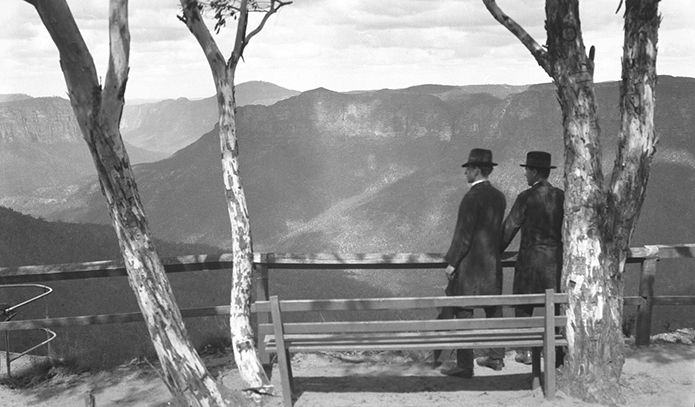
Two men at the Govett’s Leap lookout in the Blue Mountains, c1918. Image via Samuel J. Hood Studio Collection, Australian National Maritime Museum.
Considering lookouts in terms of design, this early 20th century example of a lookout in Ireland’s County Clare is both intriguing and intimidating:
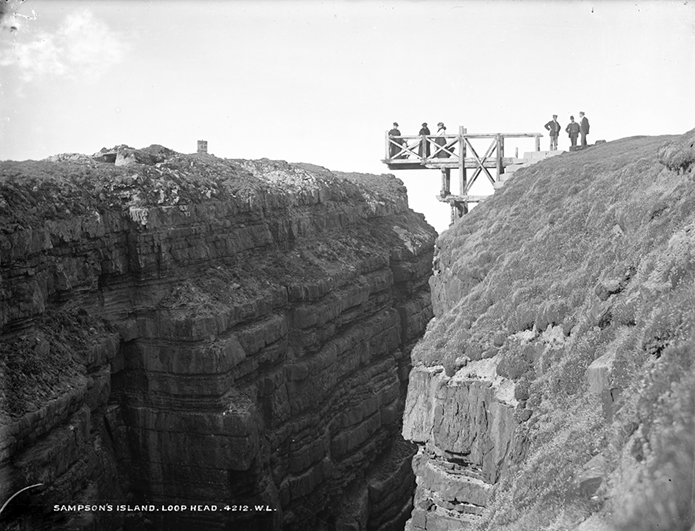
Viewing Post at Sampson Island, Loop Head, Co. Clare (circa 1905). Image via National Library of Ireland.
An example of a striking mid-century lookout that continues to be enjoyed by visitors today can be found on Clingman’s Dome, the tallest of the Great Smoky Mountains in Tennessee, USA. At the mountain’s summit you will find its brutalist and spiralling concrete observation tower. Built in 1959 and rising 50 feet above the treetops, the monolithic tower offers panoramic views of the Smokies and beyond.
Lookouts in the 21st Century
Many celebrated present-day lookouts are deliberate modern design statements, their thought-provoking forms cleverly juxtaposed with nature. Where their primary objective is to provide a means to explore, survey and ponder nature’s phenomena, they help to achieve this goal by conveying people to nature through the medium of design.
With the varied examples portrayed below, it might be argued that an individual is perhaps more likely to stand in awe of nature because they have been inspired and encouraged by the lookout’s design. This author believes that a well-designed lookout – both modest and grand – can promote and enhance nature.
Aurland Lookout
Norway is a territory with more coastline relative to its land mass than any other urbanised country in the world. Its dramatic terrain is an Ice Age wonder, replete with breathtaking fjords, lush forests and soaring mountains. It is little wonder that architectural studios such as Saunders Architecture and Rintala Eggertsson have designed lookouts that complement Norway’s rural allure.
Aurland Lookout in Aurland, Norway, was designed by Saunders Architecture, a practice established by acclaimed architect, Todd Saunders, in the western Norwegian city of Bergen. Saunders’ practice has eschewed normative expectations of architecture as urban, working instead to realise construction projects that act in harmony with nature. Indeed nature plays a central role in the studio’s architectural vision. Projects consider the landscape to be fundamental, combining aesthetic sensibility, textures, materials and shapes, alongside the necessity for spatial awareness.
The Aurland Lookout was completed in 2006 and is described as: “the almost literal placement of a gangplank jutting out from the side of the mountain, overlooking the fjord and town below… the lookout is a walkway into the void, a piece of architectural theater (sic).” (From Todd Saunders: Architecture in Northern Landscapes published by Birkhäuser, November 2012). The Aurland Lookout is 30m long and 4m wide. Visitors are drawn to a stand at the 1.2m high glass balustrade, whilst the lookout surges onward, plummeting into the breathtaking fjord. In many ways a modest and minimalist design statement, the lookout is surely one of the best representations of its kind anywhere in the world.
Stokke Forest Stair
Designed by Saunders Architecture and completed in 2012, this Forest Stair was installed in Øye Sculpture Park, Stokke, Norway. It provides the visitor with a raised standpoint above the forest’s floor and has a somewhat surreal appearance, its form one that is unexpected in a remote woodland. The ‘Stair’ was transported by helicopter and meticulous surveying of the site meant that no trees had to be cut in order to accommodate its structure.
Seljord Watchtower
Designed by Rintala Eggertsson Architects, a studio with offices in Oslo and Bodø, Norway, the Seljord Watchtower was in part conceived and installed owing to the legend of a sea serpent, ‘Selma’, in the adjacent lake. The architect’s say that: “tales about mysterious phenomena in the lake have flourished for centuries and are a natural part of the daily life in the area.” (Source)
The municipality of Seljord is an area used by tourists, locals and bird-watchers. The viewing platform, in the form of a 12m tower with a periscope-like appearance, has three lookout spaces: one main space at its apex that looks across the Seljord lake; two smaller spaces en route to the top, one looking towards a nearby bird nesting area, the other towards the crown of two large pine trees.
Pinohuacho observation deck
The Pinohuacho observation deck in Pinohuacho, Villarica, Chile, was designed by architect Rodrigo Sheward and constructed in 2006. Pinohuacho is an area that was devastated at the end of 1971 as a consequence of the Villarrica volcano erupting. Architectural news site, ArchDaily, tells the story of the “reconversion of a devastated land.” In part this is about development and growth of agrotourism in the region; the modest timber observation deck, that also acts as a shelter, is just one element of this new growth.
The Grand Canyon Skywalk
The Skywalk, opened in 2007, is a transparent horseshoe-shaped cantilever bridge that was designed and engineered by Lochsa Engineering & MRJ Architects. Projecting 70 feet out from a side canyon in Grand Canyon West, it stands 4000 feet above the Colorado River. The Skywalk was commissioned by the Hualapai Indian Tribe who utilise it as a way to accrue money from tourism.
Millenniumview (Jahrtausendblick)
This viewing platform, designed by Austrian architect Zamp Kelp, was established on the occasion of the EXPO 2000 in Hanover, Germany. Sited on the border of an old quarry, it juxtaposes a statuesque staircase made from quarry stone with a spectacular cantilevered glass and steel platform.
Tower at the Mur River
This observation tower, rising above the river Mur at the Austrian border with Slovenia, was completed in 2009 and designed by Munich-based architectural practice ‘terrain’. Made of steel and aluminium, the tower is a purposely curious object, set amidst a forest in Southern Styria, southeast Austria. Visitors to the tower will enjoy revolving views of nature as they ascend and descend the double spiral stairs; at its peak, a platform rests 27 metres above the ground. From here: “the treetops of the wonderful riparian forest along the banks of the Mur river near Gosdorf unfold before the eyes of those who climb all the way up the tower.” (via Dezeen).
These lookouts are just a handful of examples of how design, when placed within nature, can help people to see the world from a fresh perspective.
Gerard McGuickin is a freelance design writer and a blogger for his online zine, Walnut Grey Design. He writes intelligently about ‘good design’ from the viewpoint of interiors, architecture, objects and lifestyle. Gerard has a specialist interest in modern contemporary and midcentury Nordic and British design.

